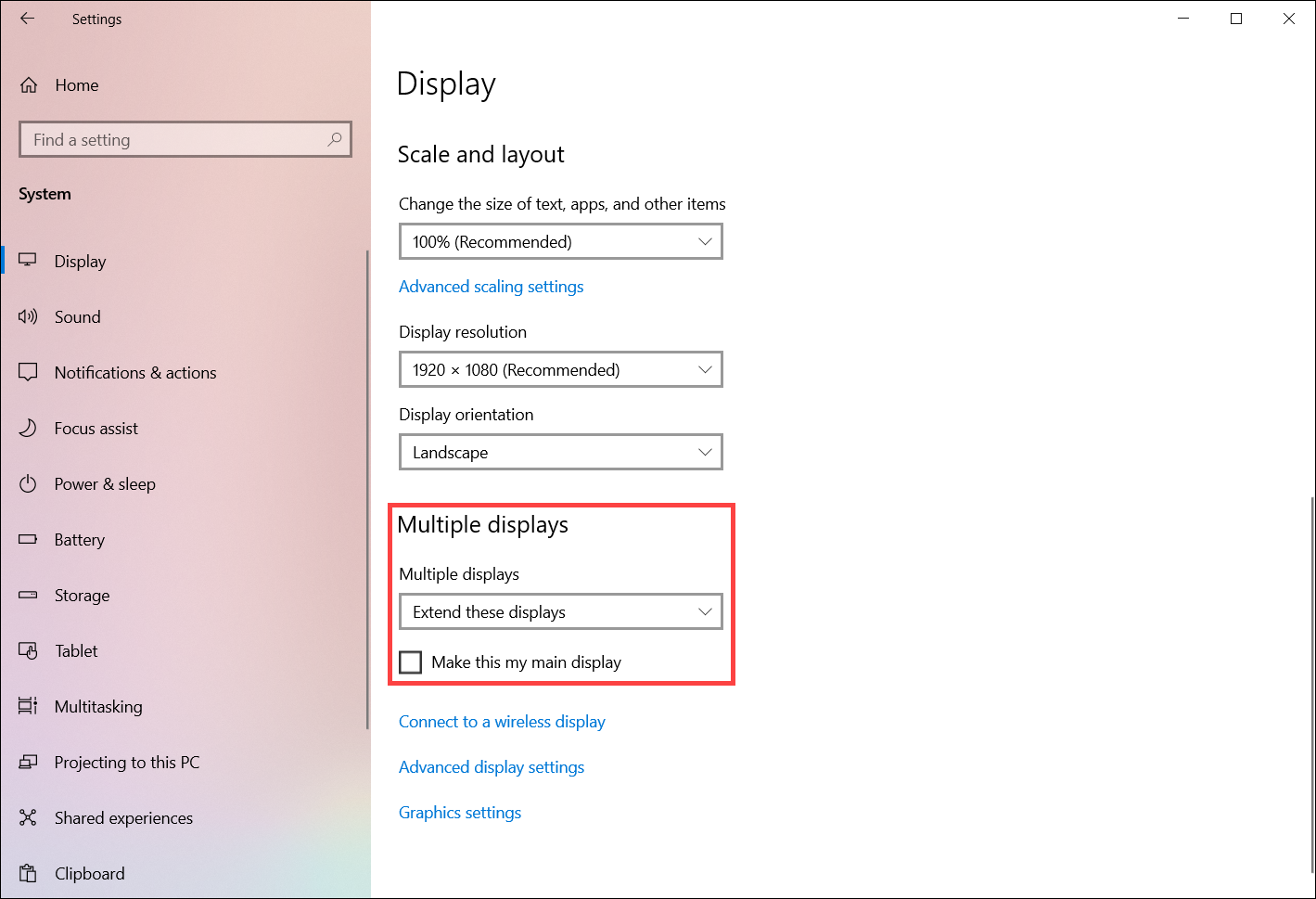[Notebook/Desktop/AIO] How to connect your PC to one or more external monitors with different connectors ?
To connect your PC to the external monitor , please make sure that you have used the correct type of cable, and all accessories properly connected. The following are common connectors you will use:
- HDMI connector
HDMI (High-Definition Multimedia Interface) is a digital connection type for transferring the uncompressed audio/video signal and is HDCP compliant for DVD, Blu-ray, and other protected content playbacks.

- USB Type-C connector
USB Type-C (USB-C) has multiple functions, but it’s not all USB Type-C connectors have a display-supported feature. For more details, please refer to How to determine the function of USB Type-C to learn more about your PC whether it has a display output function or not.

- Mini DisplayPort connector
DisplayPort (DP) can transfer audio/video signal. Mini DisplayPort is a smaller size of DisplayPort, and it is commonly utilized on laptops.

The following takes you to adjust the external monitor settings in Windows, please go to the corresponding instruction based on the current Windows operating system on your computer:
Rearrange your displays
You will see this option when Windows detects more than one display. Each display will be numbered to help you identify them more easily.
- Please select [Start
 ]①, then select [Settings
]①, then select [Settings ]②.
]②.

- Select [Display]③.
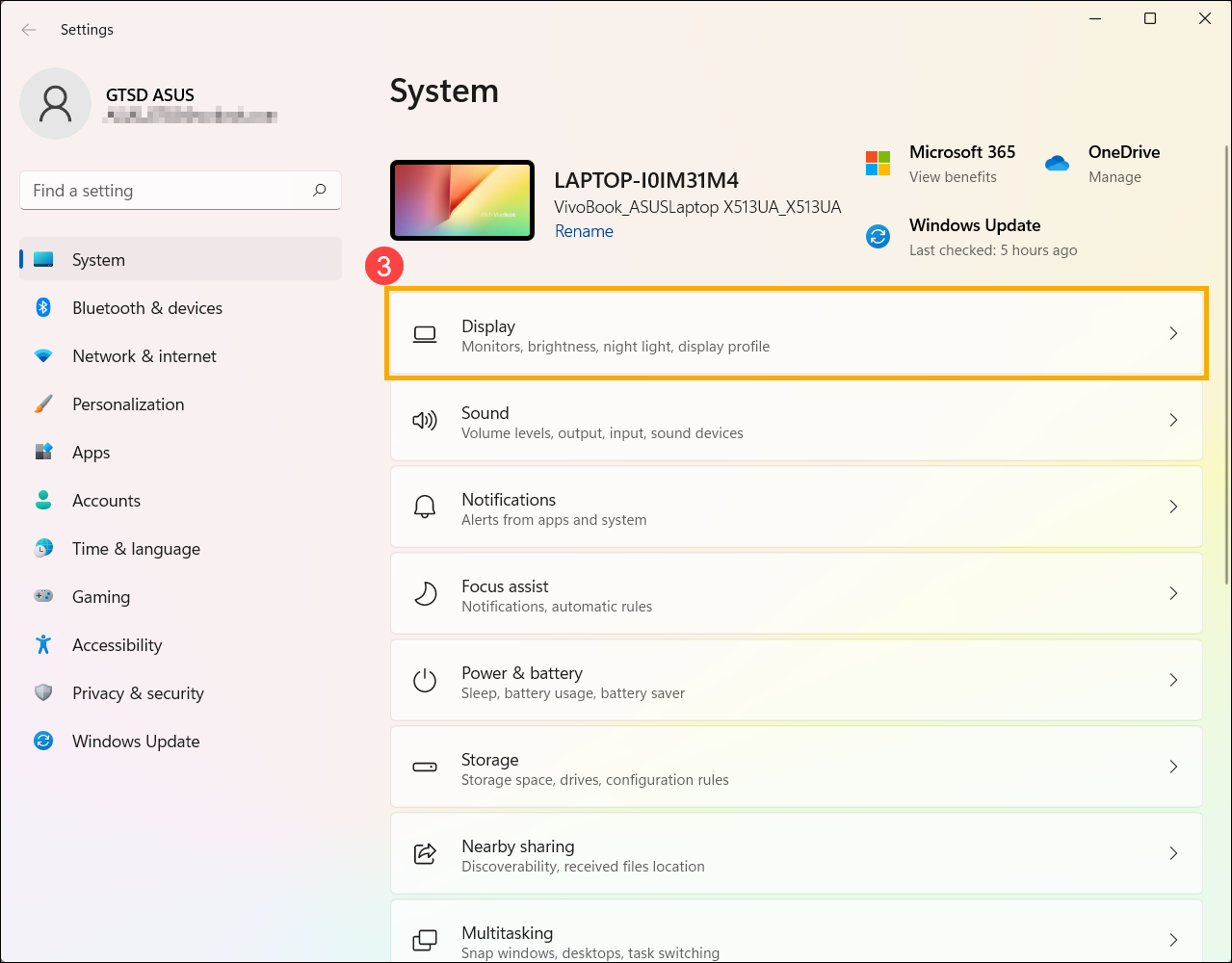
- You’ll see the relevant settings for external displays.

Identify a display
To see which number corresponds to a display, please select [Identify] in Display settings and then a number appears on the screen of the display it’s assigned to.
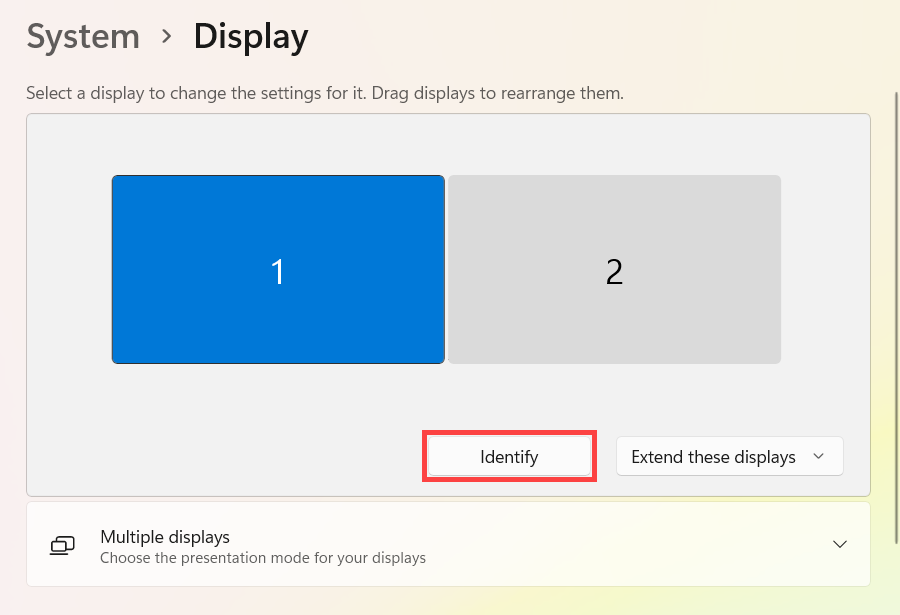
The following number 1 corresponds to a Notebook display, and number 2 corresponds to an external display.

Detect a display
If you connect another display and it isn’t showing in settings, please select [Multiple displays]①, then select [Detect]②.
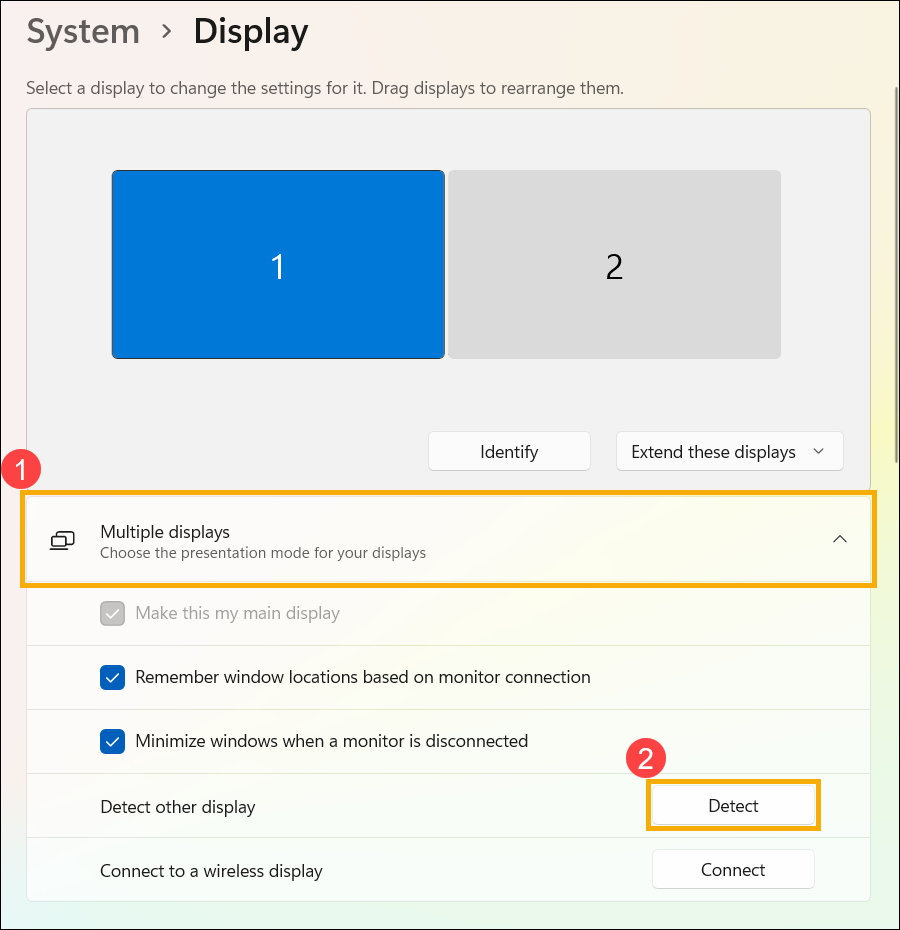
Arrange your displays
If you want your displays to match how they’re set up in your home or office, and move your mouse cursor across the different displays, you can rearrange the display layout.
In Display settings, select and drag the display to where you want, then select [Apply].
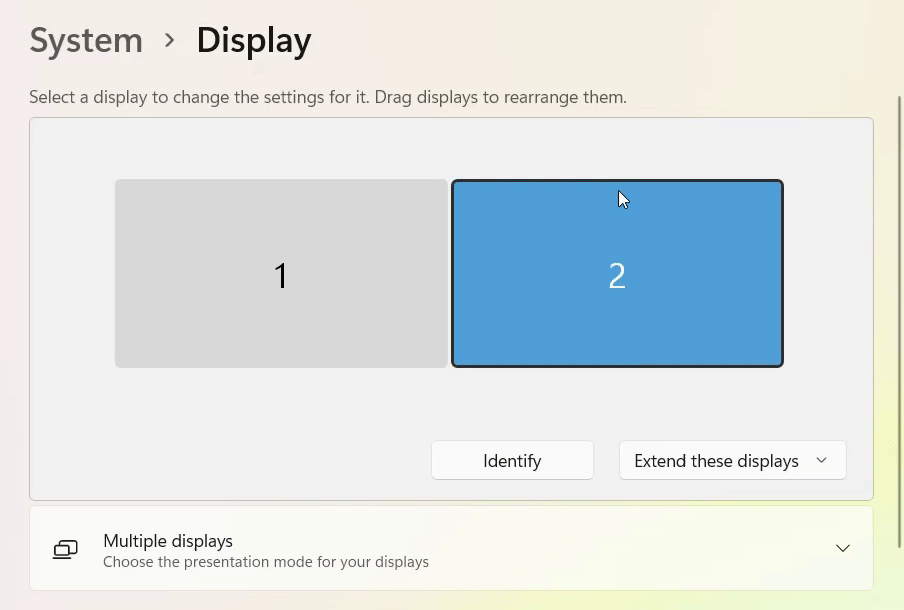
Change display options
After you’re connected to your external displays, you can change the size of text and windows on the desktop, or display resolution to fit your personal preferences.
Note: You need to select the number corresponding to a monitor and then change display settings, so that the new settings will be applied to this monitor.
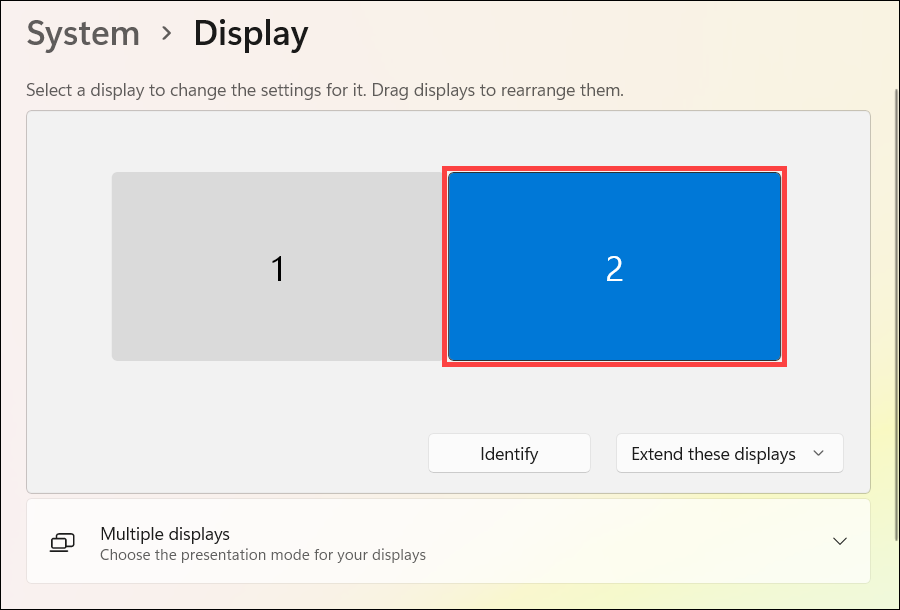
In Display settings, scroll down to Scale & layout:
- If you would like to change the size of text, apps, and other items, please select the size you want from the [Scale] field.
- If you would like to adjust the resolution, please select a resolution you want from the [Display resolution] field.
- You can also adjust the display orientation, which includes Landscape, Portrait, Landscape (flipped), or Portrait (flipped) in the [Display orientation] section
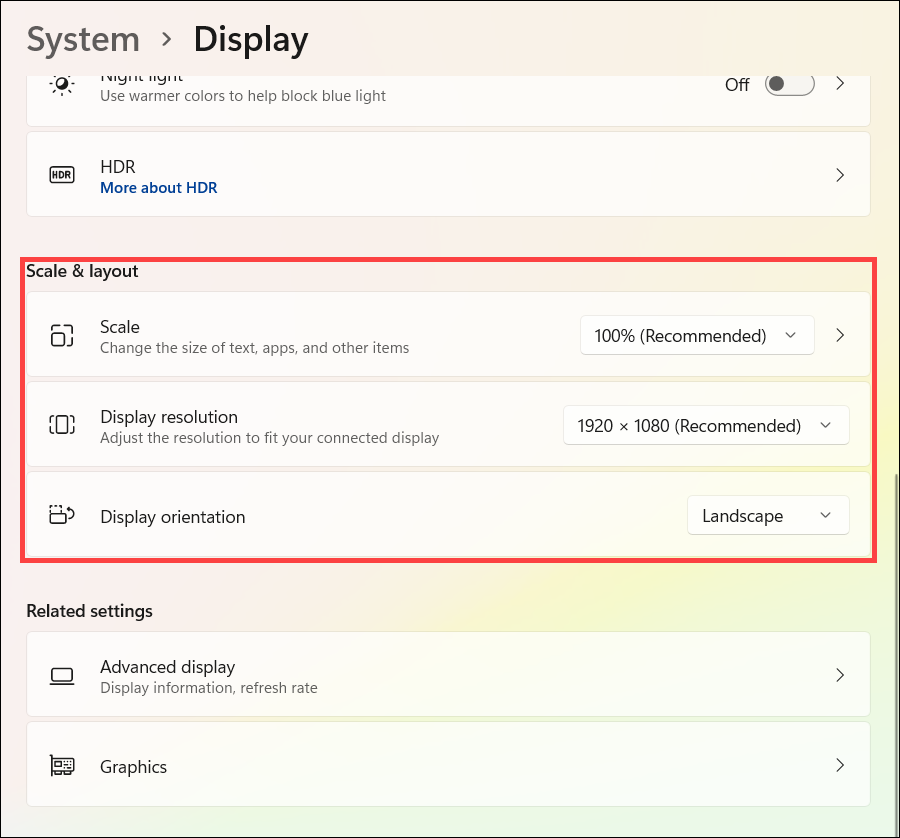
You may receive the following notification after adjusting the display settings, please select [Keep changes] to enable your settings.
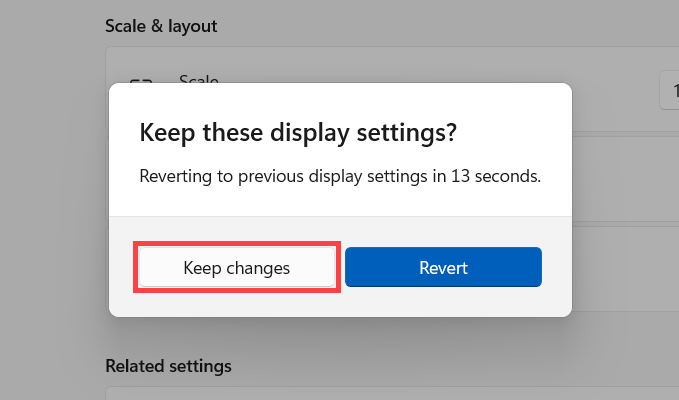
Choose a display option
The following is what you can choose:
- PC screen only: See things on one display only. (It means the internal monitor for Notebook or AIO products.)
- Duplicate: See the same thing on all your displays.
- Extend: See your desktop across multiple screens. When you have displays extended, you can move items between the two screens.
- Second screen only: See everything on the second display only.
To change what shows on your displays, press Windows logo key + P on the keyboard. The Project options will appear on the right side of the screen.
+ P on the keyboard. The Project options will appear on the right side of the screen.
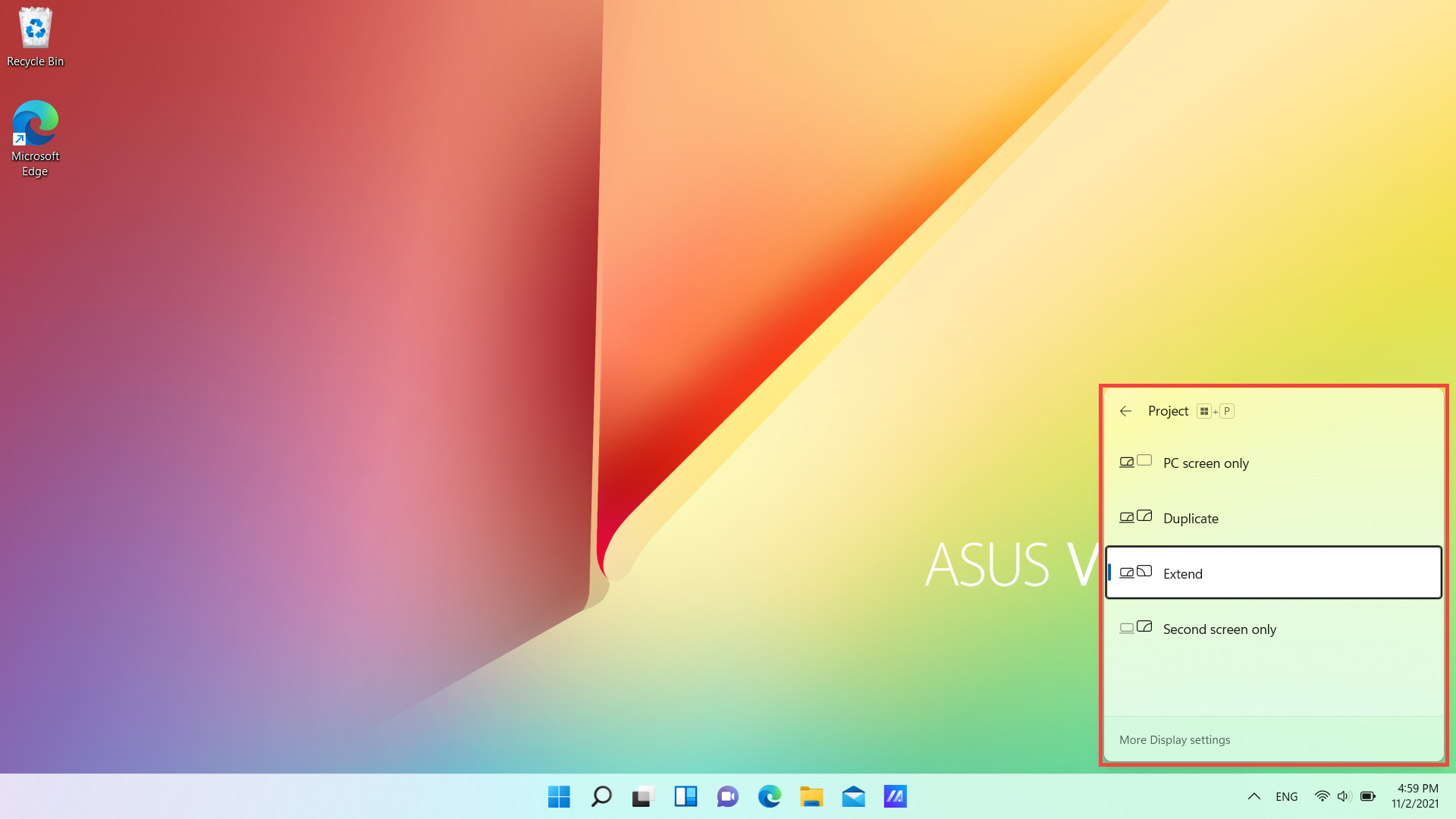
Or, you are able to change a display option in Display settings:
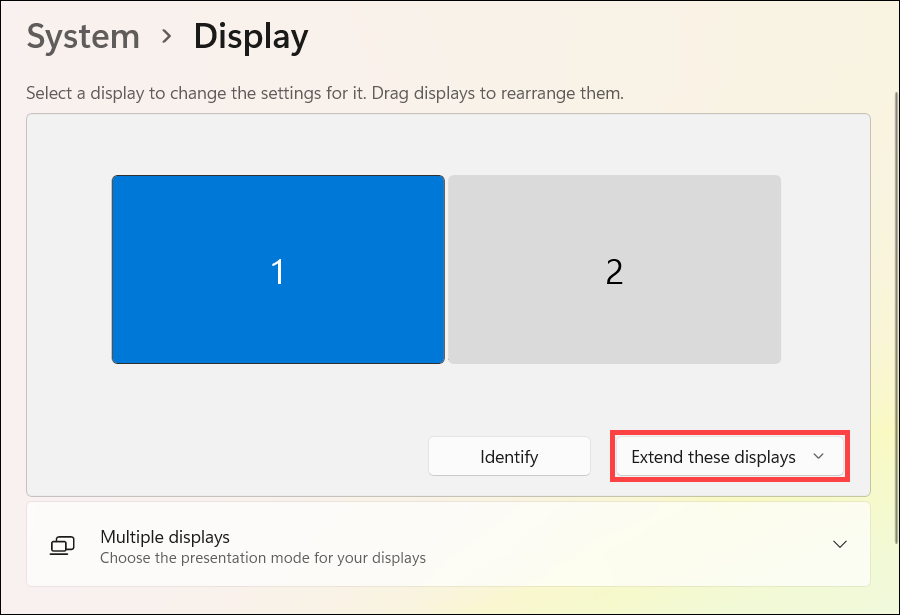
Rearrange your displays
You will see this option when Windows detects more than one display. Each display will be numbered to help you identify them more easily.
- Please select [Start
 ]①, then select [Settings
]①, then select [Settings ]②.
]②.
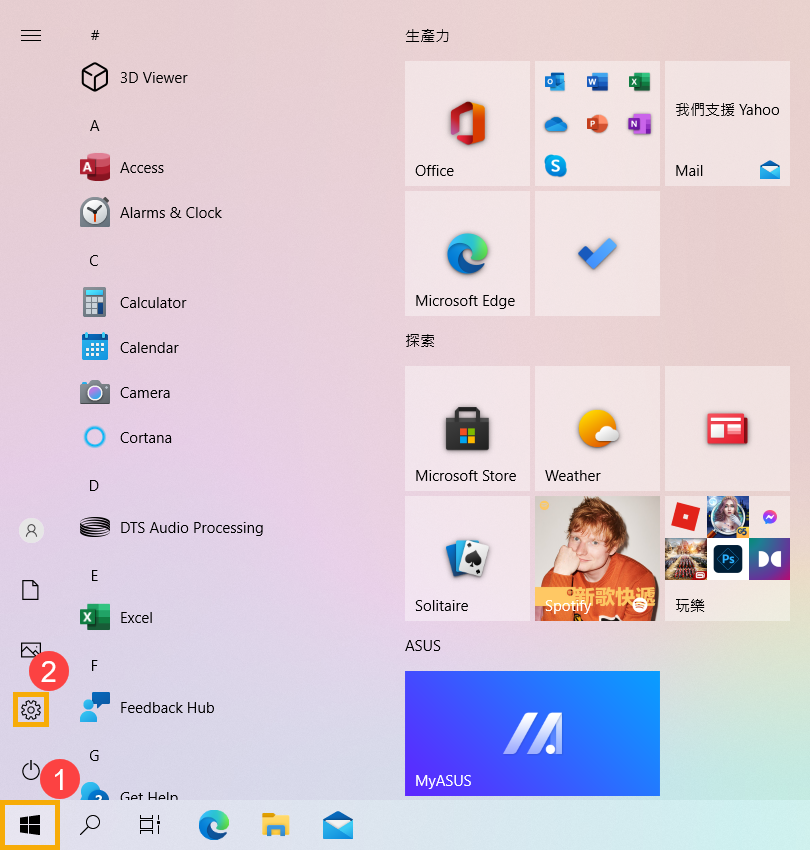
- Select [System]③.
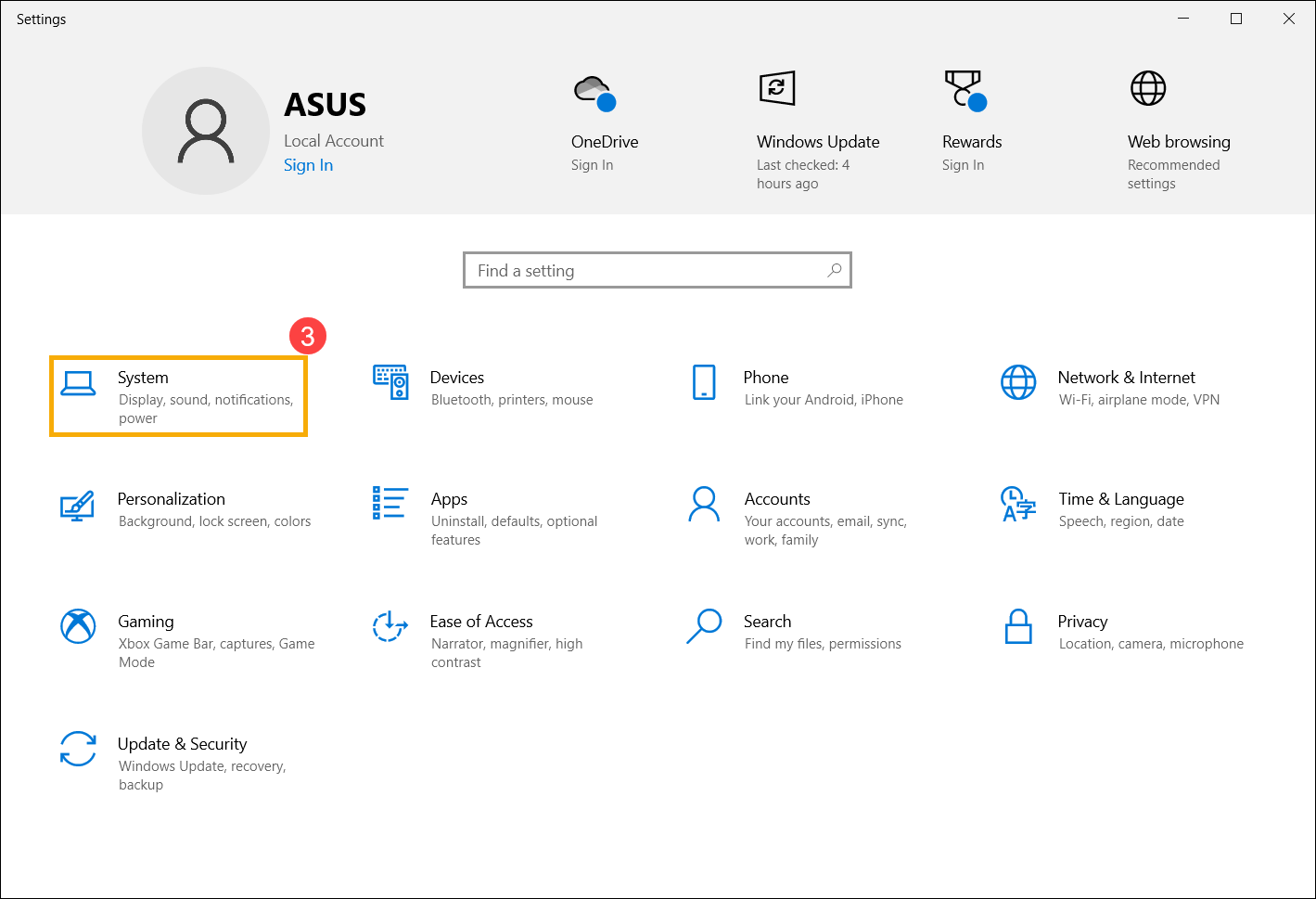
- Select [Display]④, you’ll see the relevant settings for external displays.
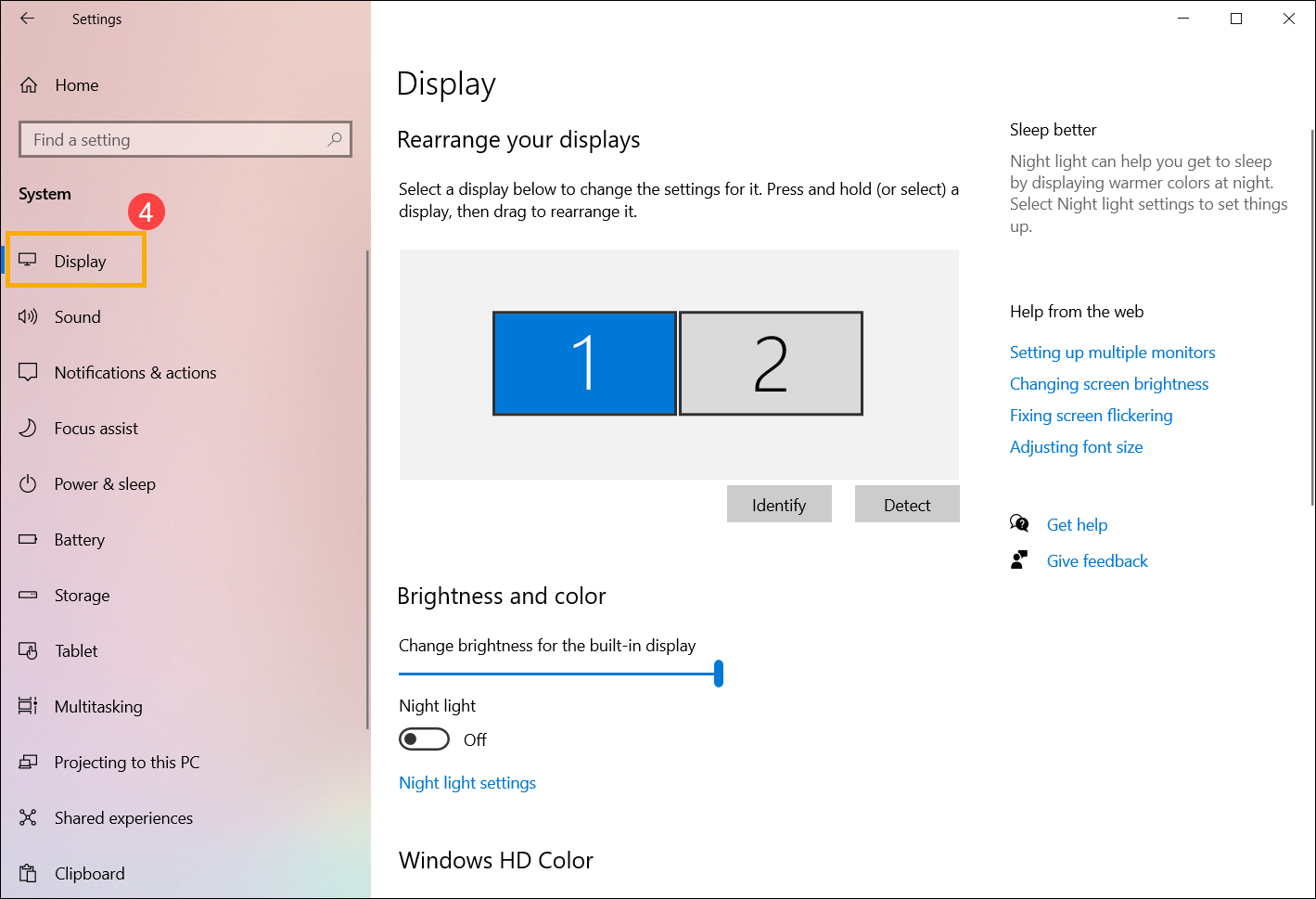
Identify a display
To see which number corresponds to a display, please select [Identify] in Display settings and then a number appears on the screen of the display it’s assigned to.
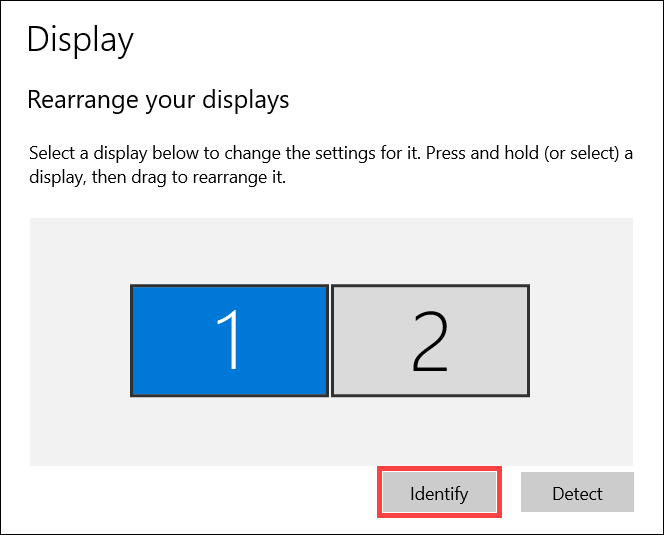
The following number 1 corresponds to a Notebook display, number 2 corresponds to an external display.

Detect a display
If you connected another display and it isn’t showing in settings, please select [Detect].
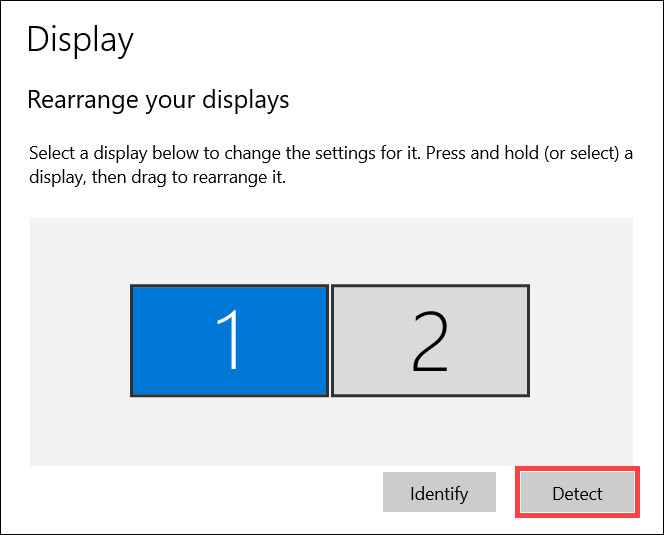
Arrange your displays
If you want your displays to match how they’re set up in your home or office, and move your mouse cursor across the different displays, you can rearrange the display layout.
In Display settings, select and drag the display to where you want, then select [Apply].
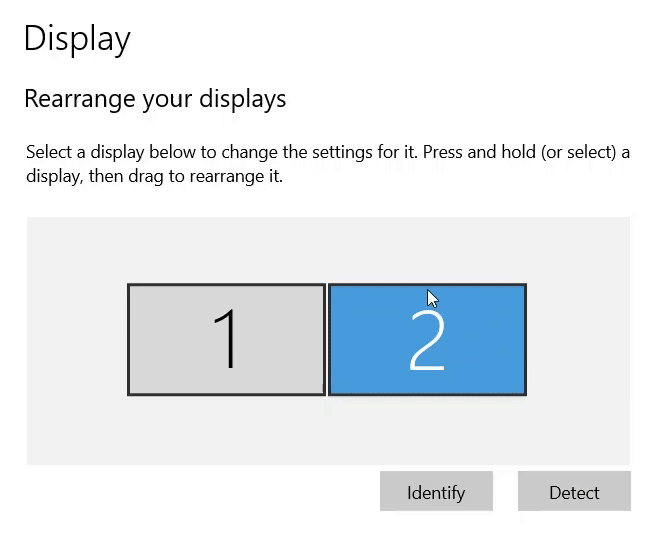
Change display options
After you’re connected to your external displays, you can change the size of text and windows on the desktop, or display resolution to fit your personal preferences.
Note: You need to select the number corresponding to a monitor and then change display settings, so that the new settings will be applied to this monitor.

In Display settings, scroll down to Scale & layout:
- If you would like to change the size of text or apps, please select the size you want from the [Change the size of text, apps, and other items] field.
- If you would like to adjust the resolution, please select a resolution you want from the [Display resolution] field.
- You can also adjust the display orientation, which includes Landscape, Portrait, Landscape (flipped), or Portrait (flipped) in the [Display orientation] section
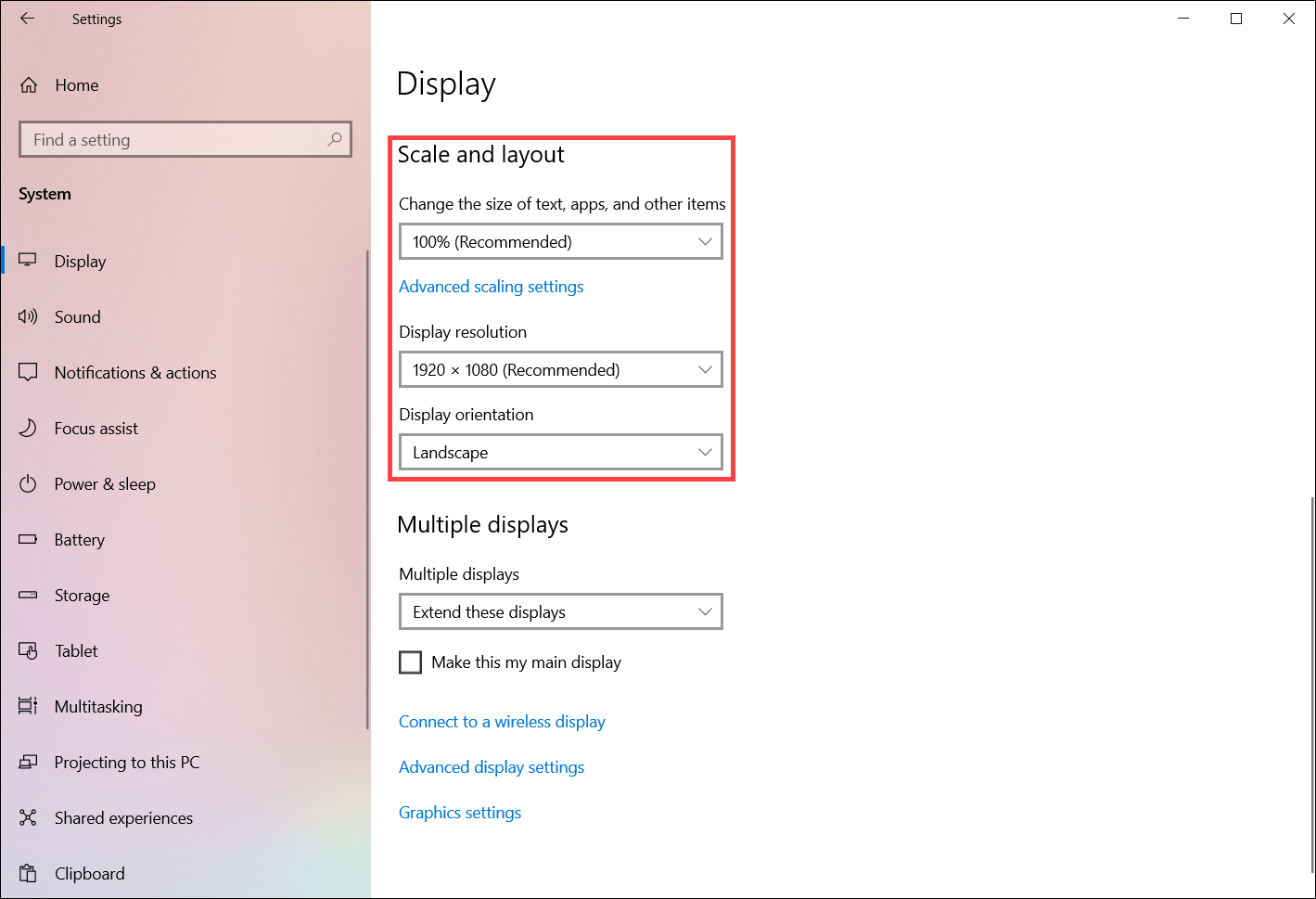
You may receive the following notification after adjusting the display settings, please select [Keep changes] to enable your settings.
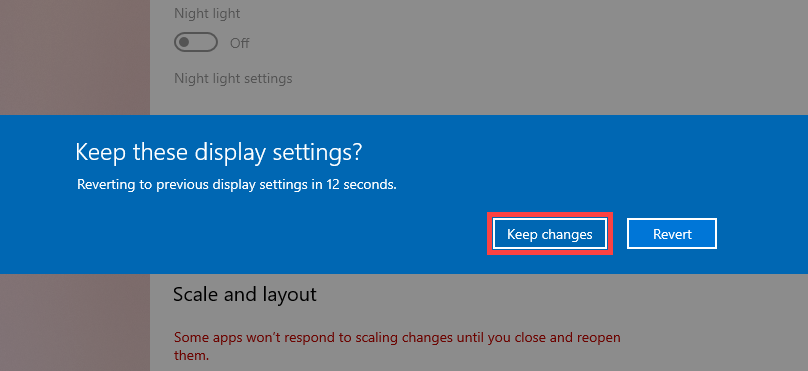
Choose a display option
The following is what you can choose:
- PC screen only: See things on one display only. (It means the internal monitor for Notebook or AIO products.)
- Duplicate: See the same thing on all your displays.
- Extend: See your desktop across multiple screens. When you have displays extended, you can move items between the two screens.
- Second screen only: See everything on the second display only.
To change what shows on your displays, press Windows logo key + P on the keyboard. The Project options will appear on the right side of the screen.
+ P on the keyboard. The Project options will appear on the right side of the screen.
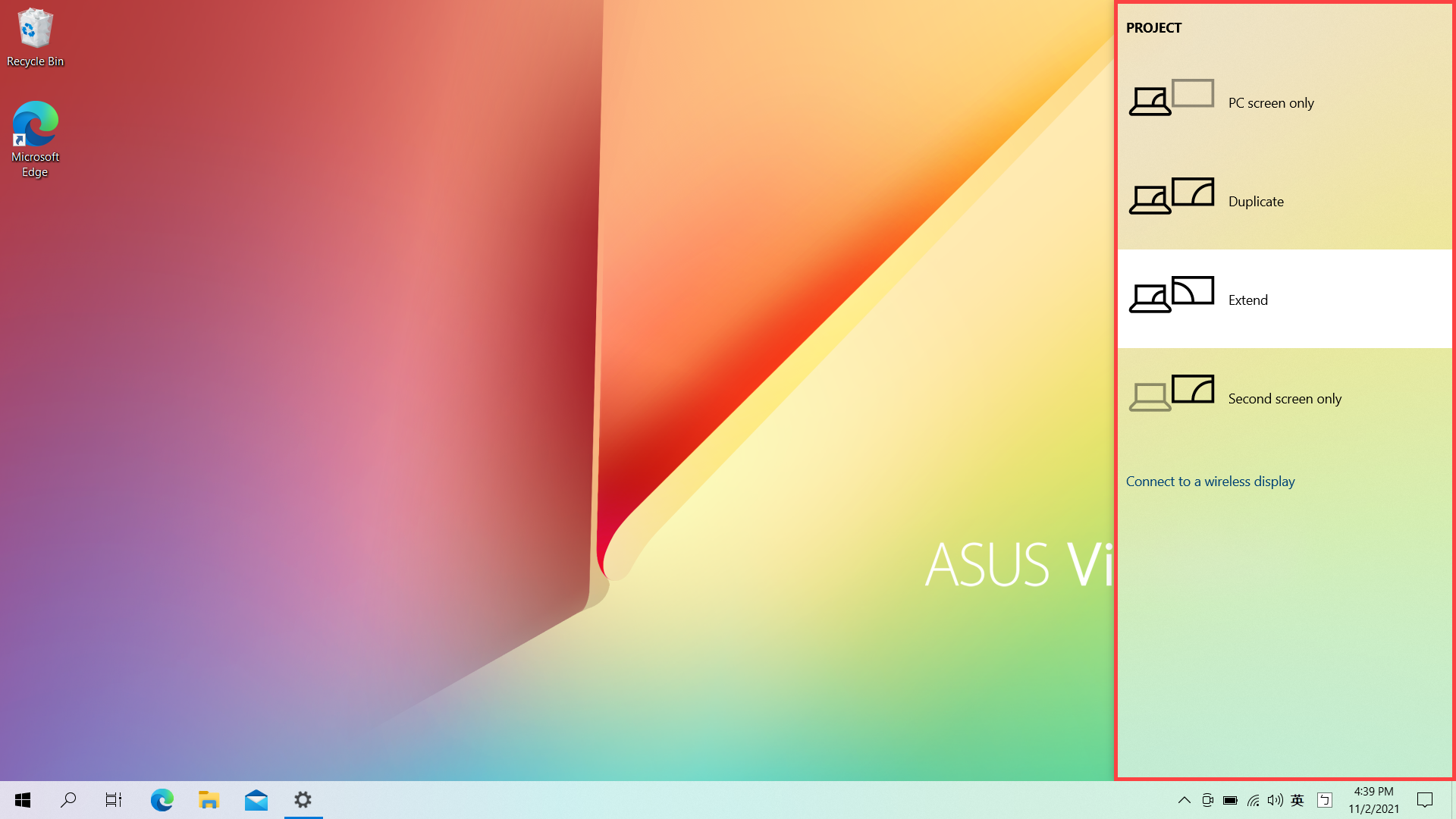
Or, you are able to change a display option in Display settings:
